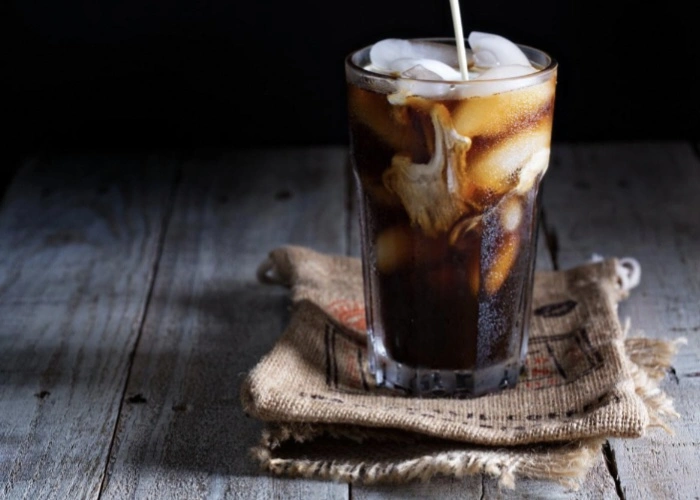Cold brew coffee has become a staple in modern coffee culture, prized for its smooth, low-acidity flavor and versatility in cocktails. One of the most sophisticated uses of cold brew is in an Espresso Martini, where its rich, concentrated profile enhances the drink’s depth and complexity. This guide will walk you through the entire process—from selecting the right beans to crafting a perfectly balanced cocktail.
Why Cold Brew Works Best for Espresso Martini
Traditional espresso brings intense flavor and crema to an Espresso Martini, but cold brew offers a smoother, less acidic alternative. The slow extraction process of cold brew highlights chocolatey and nutty notes while minimizing bitterness, making it an excellent match for vodka and coffee liqueur. Additionally, cold brew’s concentrated nature ensures the coffee flavor doesn’t get lost among the other ingredients.
Choosing the Right Coffee Beans
The foundation of great cold brew starts with high-quality beans. For an Espresso Martini, opt for medium to dark roast beans with flavor notes of chocolate, caramel, or nuts. These profiles complement the cocktail’s sweetness and add depth. Single-origin beans from Brazil or Colombia are reliable choices, but blends designed for espresso can also work well. Always use freshly roasted beans (within 2-4 weeks of the roast date) for optimal flavor.
Grinding Coffee for Cold Brew
A coarse grind is essential for cold brew. Fine grounds can lead to over-extraction and a muddy texture, while a coarse grind ensures a clean, smooth extraction. If you don’t have a burr grinder at home, many local roasters offer grinding services—just specify it’s for cold brew. Aim for a consistency similar to coarse sea salt.
The Ideal Coffee-to-Water Ratio
The standard ratio for cold brew concentrate is 1:4 (coffee to water by weight). For example, 100 grams of coffee to 400 grams of water. This produces a strong concentrate that can be diluted or used straight in cocktails. If you prefer a lighter strength, a 1:8 ratio works, but for Espresso Martinis, the 1:4 ratio ensures the coffee flavor remains prominent.
Brewing Methods for Cold Brew
There are several ways to make cold brew, each with its own advantages.
Immersion Method (Most Common)
This is the simplest approach. Combine coarsely ground coffee and cold water in a large jar or French press, stir gently, and let it steep for 12-24 hours at room temperature. Strain through a fine-mesh sieve or a coffee filter to remove grounds.
Slow Drip (Japanese-Style Cold Brew)
This method uses a specialized tower dripper for a cleaner, more nuanced extraction. It takes longer (up to 24 hours) but produces a refined concentrate ideal for cocktails.
Toddy System
A commercial favorite, the Toddy system includes a brewing container and a specialized filter for effortless straining. It’s efficient for larger batches.
Optimal Brewing Time & Temperature
Cold brew requires patience. The sweet spot for extraction is between 16-20 hours at room temperature. Brewing in the fridge can take longer (up to 24 hours) and may yield a slightly milder flavor. Avoid over-extracting beyond 24 hours, as it can introduce unwanted bitterness.
Straining & Filtering Your Cold Brew
After steeping, strain the mixture through a fine-mesh sieve lined with a cheesecloth or a paper filter. For the clearest result, a second pass through a coffee filter helps remove fine sediment. This step is crucial for a smooth texture in your Espresso Martini.
Storing Cold Brew Concentrate
Proper storage extends freshness. Keep the concentrate in an airtight container in the fridge for up to two weeks. For longer storage, freeze it in ice cube trays and thaw as needed.
Crafting the Perfect Espresso Martini with Cold Brew
Now that your cold brew concentrate is ready, it’s time to mix the cocktail.
Ingredients
- 2 oz vodka
- 1 oz coffee liqueur (e.g., Kahlúa or Mr. Black)
- 1 oz cold brew concentrate
- 0.5 oz simple syrup (adjust to taste)
- Ice
- Coffee beans (for garnish)
Instructions
- Fill a shaker with ice.
- Add vodka, coffee liqueur, cold brew, and simple syrup.
- Shake vigorously for 15-20 seconds until well-chilled.
- Double-strain into a chilled martini glass.
- Garnish with three coffee beans (symbolizing health, wealth, and happiness).
Adjusting Strength & Sweetness
Tailor the cocktail to your preference. For a stronger coffee flavor, increase the cold brew to 1.5 oz. If you prefer less sweetness, reduce the simple syrup or use a drier coffee liqueur.
Alternative Variations
Vanilla Espresso Martini
Add 0.25 oz vanilla syrup for a sweeter, aromatic twist.
Spiced Cold Brew Martini
Infuse the cold brew with cinnamon or cardamom during steeping for a warm, spiced note.
Common Mistakes to Avoid
- Using a fine grind (causes bitterness and sediment).
- Over-diluting the concentrate (weakens the coffee flavor).
- Skipping the double-strain (results in a gritty texture).
- Using stale coffee beans (lacks depth and aroma).
Pairing Espresso Martinis with Food
This cocktail pairs beautifully with dark chocolate, tiramisu, or cheese platters featuring aged gouda or blue cheese. The rich, bittersweet notes complement the drink’s profile.
Conclusion
Cold brew coffee elevates the Espresso Martini by delivering a smoother, more balanced coffee flavor than traditional espresso. By selecting quality beans, mastering the brew process, and fine-tuning the cocktail recipe, you can create a bar-quality drink at home. Experiment with ratios and flavors to find your perfect mix.
Now, shake, pour, and enjoy your expertly crafted Cold Brew Espresso Martini.
Related topics:
Where to Buy Gaggia Espresso Machines: A Complete Guide
Buon Giorno Coffee: A Journey to Exceptional Espresso & Beyond
How Long to Pull a Double Shot of Espresso


